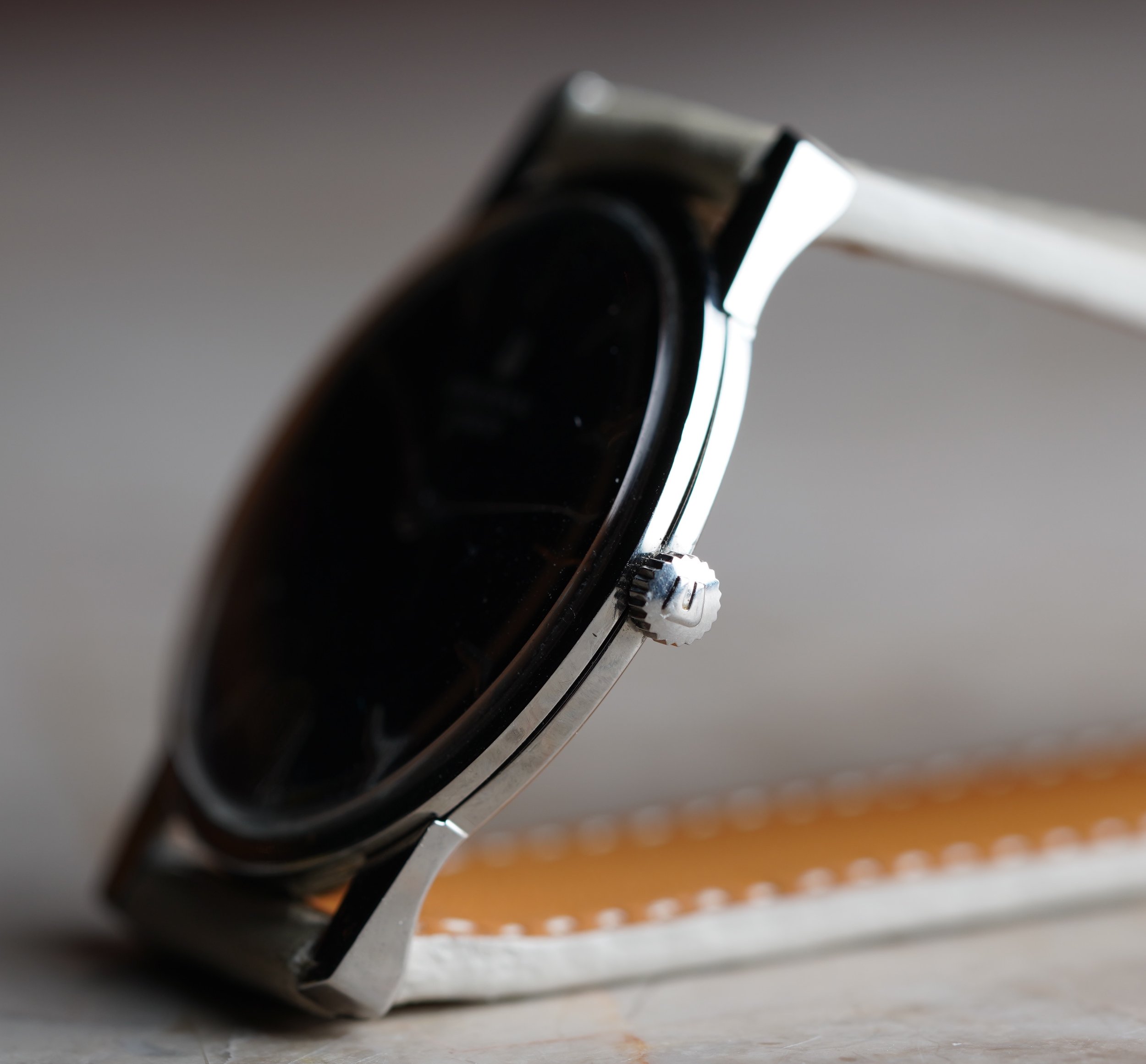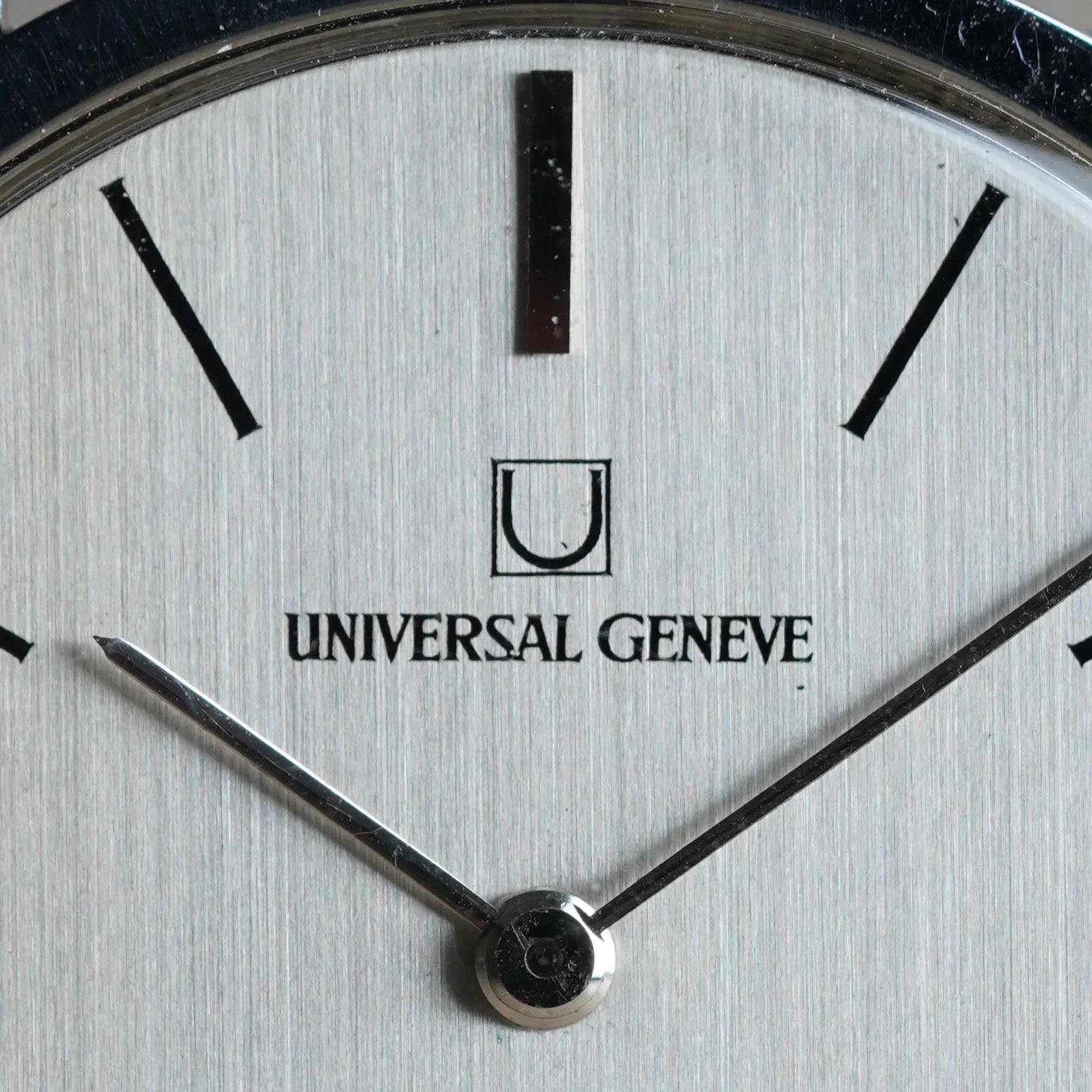Two Universal Genève 1970s Wristwatches
Undersized or Undervalued?
By Charlie Dunne
Even in 2022, there is a good argument that UG is one of the best value propositions in vintage watches. In addition to the manufacturer’s rich history (particularly in their in-house complicated models), across the 1940s-1970s the UG catalog is a pantheon of iconic watches. Yet the time-only watches remain underacknowledged. Rather than pointing to the fan-favorite and Genta-designed Polerouter, two rather diminutive examples from the 1970s caught my attention.
Universal Genève Reference 842101/06
While the UG 842101 is 31mm in diameter and 6mm thick, it is an incredibly stylish option for those who can appreciate timepieces in the smaller size. The applied hour markers are very slender and proportional to the dial. The thick-white branding is extremely appealing and the “U” has an almost graffiti-bubble letter aesthetic. Other examples will possess this same logo, but instead an applied “U”.
On both the exterior and interior case back the reference number is stamped. The crown is signed with the bold-Universal “U”.
1970 Universal Genève advertisement featuring ref 842101/06. Image credit: nakahiro.parfait.ne.jp
Universal Genève “Altesse” Reference 842101/09B
Compared to the blue-soleil dial, the reference 842101/09B features a silver-vertically brushed dial. Applied-baton numerals reside at 3, 6, 9, and 12 while the remaining hours feature painted markers. Interestingly, both the watches were in production at the same time, yet, they feature different branding. The Altesse has one line of text for the manufacturer’s name and a squared-in U logo. Other models from the era feature a non-outlined U logo. As in the previous model, the crown is signed with the logo on its corresponding dial.
While on first impression the watch appears to be a double-signed dial, the Altesse is actually the model of the watch. It can be found on several different timepieces from the manufacturer during this era, many of which with different dial configurations.
1970 Universal Genève catalog featuring ref 842101/09B. Image credit: nakahiro.parfait.ne.jp
Calibre 42
The timepieces are powered by the thin calibre 42. While it is not as remarkable as a Tri-Compax, or Uni-Compax for that matter, the movement is simple and reliable. You will not find yourself in a tough situation if the watch ever needs a service. Additionally, these models remain extremely attainable. While the least expensive models can be found for around $500, I tend to appreciate those without the painted-Roman numerals, and instead gravitate towards examples such as these or wood dial variants.
















